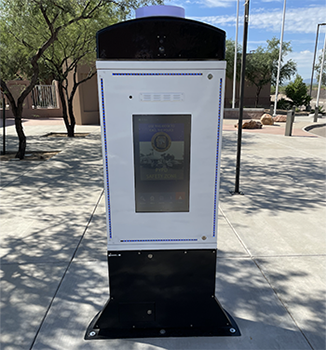
By Jay Jason Bartlett
As we know it, physical security is the protection of personnel, property, and assets from theft, damage, or unauthorized access. With the advancement of technology, physical security has evolved from traditional methods such as access control systems, video surveillance cameras, and human security guards to autonomous systems, providing enhanced protection and improved operational efficiency. Autonomous physical security refers to the integration of advanced technologies, such as artificial intelligence (AI), machine learning (ML), robotics, and internet of things (IoT), to create self-sufficient security systems that can operate without human intervention.
The use of autonomous physical security systems has been on the rise in recent years, driven by the challenges in the human labor force, the need for improved security, and operational efficiencies in various industries. The benefits of autonomous physical security systems include reduced operational costs, improved security outcomes, and increased situational awareness.
One of the major advancements in autonomous physical security is the use of AI and ML algorithms. These algorithms can be trained to identify patterns and anomalies in security data, enabling the system to detect and respond to security threats in real-time.
For example, an autonomous security system equipped with AI and ML algorithms can analyze video footage from surveillance cameras to detect unusual activities, such as loitering or vandalism and alert security personnel.
Another advancement in autonomous physical security is the integration of robotics. Robots equipped with sensors and cameras can be deployed for security purposes, providing real-time surveillance and monitoring of critical infrastructure. For instance, robots can be deployed in hazardous environments, such as nuclear power plants or chemical facilities, to provide real-time monitoring and detection of security threats.
The integration of IoT technologies has also contributed significantly to the advancement of autonomous physical security. IoT devices, such as sensors and cameras, can be connected to a network and used to collect and transmit data to a central control system. This data can then be analyzed and used to detect security threats in real-time. For example, an IoT-powered security system can be used to monitor the perimeter of a facility and detect any unauthorized access.
The future of autonomous physical security is promising, with the development of new technologies and the integration of existing technologies. One of the major trends in autonomous physical security is the integration of biometrics.
Biometric technologies, such as facial recognition and fingerprint scanning, can be integrated into security systems to enhance the accuracy and speed of identity verification. You will be hearing more and more about “Zero Trust” and these systems will build upon that premise. This integration can be especially useful in secure facilities, such as government buildings and high-security prisons, where a high level of security is required.
Another trend in autonomous physical security is the use of drones for surveillance and monitoring. Drones equipped with cameras and sensors can provide real-time surveillance and monitoring of large areas, making them ideal for use in remote or hard-to-reach locations. For example, drones can be used to monitor the perimeter of a facility, providing early detection of security threats.
The advancements in autonomous physical security have provided enhanced protection and improved operational efficiency for various industries. The integration of AI, ML, robotics, IoT, and biometrics technologies has enabled the creation of self-sufficient security systems that can operate without human intervention. The future of autonomous physical security is promising, with the development of new technologies and the integration of existing technologies, providing enhanced security outcomes and increased situational awareness. visit: cozaint.com

Jay Jason Bartlett is the Managing Editor of Security.World and the CEO of Cozaint Corporation, a manufacturer of security surveillance solutions. Jay has over 40 years in the high-tech industry and over 15 years in physical security. visit: cozaint.com
See more articles on Cozaint Corporation
Source: cozaint.com
